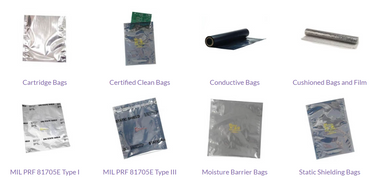- No products in the cart.
Electrostatic discharge (ESD) can pose a significant risk to sensitive electronic components and devices in the workplace. Conducting ESD surveys is a crucial step in identifying potential hazards and implementing appropriate preventive measures. In this blog post, we will outline the essential steps involved in conducting effective ESD surveys in the workplace. From planning and identification to data collection and analysis, understanding these steps is vital for maintaining a safe and ESD-controlled environment.
Step 1: Survey Planning
The first step in conducting an ESD survey is careful planning. Define the scope of the survey, considering the size and layout of the facility, the specific areas to be assessed, and the types of equipment and materials present. Identify the objectives of the survey, such as assessing the existing ESD control program or identifying potential risks in new areas.
Step 2: Identification of ESD-Sensitive Areas
Next, identify the areas within the workplace that are susceptible to Electrostatic discharge (ESD) damage. These areas may include assembly lines, testing areas, storage facilities, and any location where sensitive electronic components or devices are handled. Consult ESD control standards, such as ANSI/ESD S20.20, to determine the requirements and thresholds for ESD-sensitive areas.
Step 3: Measurement Techniques
Select the appropriate measurement techniques for the ESD survey. Common methods include measuring electrostatic fields, surface resistance, and grounding integrity. Electrostatic field meters can be used to assess the presence of static charges, while surface resistance meters measure the resistance of surfaces to charge dissipation. Grounding integrity checks the effectiveness of grounding systems in controlling ESD.
Step 4: Data Collection
Collect accurate and representative data during the survey. Use the selected measurement techniques to collect data at various points within the workplace. Record measurements at specific locations, including workstations, equipment, and grounding connections. Ensure that data is collected under normal operating conditions to provide an accurate assessment of the ESD environment.
Step 5: Analysis and Interpretation of Results
Once the data is collected, analyze and interpret the results to identify potential ESD hazards and vulnerabilities. Compare the measured values against established ESD control standards and guidelines. Determine if the measured values are within acceptable limits or if additional control measures are required. Analyze any trends or patterns in the data that may reveal specific areas of concern.
Step 6: Remediation and Corrective Actions
Based on the analysis of the survey results, develop a remediation plan to address any identified ESD hazards or vulnerabilities. Implement corrective actions to improve ESD control measures, such as implementing proper grounding practices, upgrading shielding materials, or enhancing personnel training. Regularly reassess the effectiveness of these actions to ensure ongoing ESD control.
Step 7: Ongoing Monitoring and Maintenance
ESD surveys are not one-time events; they should be conducted periodically to ensure continuous compliance with ESD control standards. Implement an ongoing monitoring and maintenance program to regularly assess the effectiveness of ESD control measures. Perform routine checks, re-evaluate potential risks, and update control procedures as needed. Regular employee training and awareness programs should also be conducted to reinforce ESD-safe practices.
By following these steps, you can ensure that your ESD surveys are effective and that you are taking steps to control ESD in the workplace.
Here are some additional tips for conducting effective ESD surveys:
- Use qualified personnel to conduct the surveys.
- Use calibrated equipment to ensure accurate results.
- Follow the manufacturer's instructions for using the equipment.
- Document the results of the surveys.
- Take corrective action to address any areas of concern.
By following these tips, you can help to ensure that your ESD surveys are effective and that you are taking steps to control ESD in the workplace.
In conclusion, ESD surveys are essential for identifying and mitigating electrostatic discharge risks in the workplace. By following the outlined steps of survey planning, identification of ESD-sensitive areas, measurement techniques, data collection, analysis, interpretation of results, and implementation of corrective actions, organizations can create a safe and controlled environment for sensitive electronic equipment. Regular monitoring and maintenance ensure ongoing compliance and effectiveness of ESD control measures. Prioritizing ESD prevention not only protects valuable assets but also enhances productivity, reduces costs, and fosters a culture of safety and quality.
For over 40 years, Lab Pro Inc. has been committed to delivering the highest quality ESD products and ESD surveys, lab supplies, lab equipment, reagents, Excelta tweezers and cutters distance learning kits, and cleanroom PPE apparel. Renowned by global medical device companies and laboratories, we ensure exceptional quality in every product. Contact us online or call 888-452-2776 to learn more. Discover top-notch lab supplies and elevate your experiments today!



















































